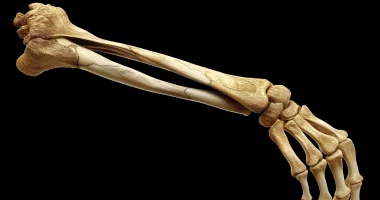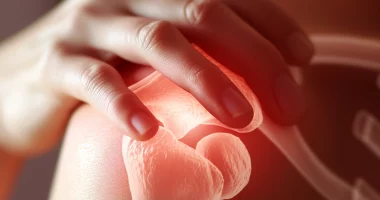Cerebrospinal fluid leak (CSF)
Definition
Cerebrospinal fluid (CSF) leak, or liquorrhea, is cerebrospinal fluid (liquor) leakage through defects in the dura mater. The pathology mainly occurs in craniocerebral traumas and is less frequently caused by cerebral tumors, congenital defects, and complications of neurosurgical interventions. With liquorrhea, a clear, odorless fluid flows out of the ear or nose, often joining disorders of consciousness and signs of focal damage to the structures of the CNS. CT and MRI of the brain, and echoencephalography are performed to diagnose the disease. Treatment is conservative and/or surgical.
General information
Liquorrhea occurs in 2-3% of people with head injuries and 5-11% of cases with skull base fractures. With severe injuries to the facial bones, the incidence of the complication reaches 40%. Pathology is of great clinical importance in clinical neurology, as it indicates extensive traumatization of intracranial structures and requires urgent complex treatment. The efforts of physicians are aimed at improving the diagnosis of liquorrhea, which is important for its timely and adequate therapy.
Causes of liquorrhea
The main etiologic factor of the pathological condition is craniocerebral trauma, which is accompanied by damage to the bony structures and the underlying brain membranes. The problem often develops with injuries to the base of the skull, the pyramid of the temporal bone, and the frontal sinus. Other causes of liquorrhea:
- Neoplasms. Tumors of the brain and bone structures that have an invasive type of growth can damage the membranes and form a defect in the liquor flow. Pathology is observed in advanced stages when the neoplasm reaches a large size.
- Congenital malformations. In craniocerebral and spinal hernias, pathological cerebrospinal fluid (CSF) outflow pathways develop. Pathology is manifested from early childhood, accompanied by other neurological disorders.
- Iatrogenic factors. Secondary liquorrhea occurs as a complication of neurosurgical operations in which the dura mater is accidentally traumatized. This situation is possible with severe head trauma and a lack of modern equipment for intraoperative neuroimaging.
Classification
According to the time of development, primary (early) liquorrhea appears in the first 24 hours after injury, and secondary (late) liquorrhea occurs several days or even weeks later. A separate variant is latent liquorrhea, when patients do not notice CSF discharge from the nose or ear canal. In practical neurology and neurosurgery, the classification of the disease by localization is essential:
- Nasal – leakage of cerebrospinal fluid from one or both nasal passages.
- Otoliquorrhea is a leakage of liquor from the external ear canal.
- Postoperative – pathologic release of liquor after skull trepanation and other neurosurgical manipulations.
Symptoms of liquorrhea
In 97% of cases, clear fluid leaks from the nasal or ear canal. Liquorrhea is constant or intermittent, the volume of discharge varies from 1 to 30 ml per day. When changing the position of the body and tilting the head, the amount of discharge increases. The fluid is odorless and odorless, and in the nasal form, patients may mistake it for the first symptom of a runny nose or respiratory allergy.
In the horizontal position, especially during sleep, liquor flows from the nasal cavity into the throat and irritates the mucous membranes. Patients are bothered by excruciating coughing fits, which are reduced in a half-sitting position. Profuse liquorrhea is accompanied by the ingestion of CSF into the stomach. In this case, the clinic of acute non-infectious gastritis occurs, with pain and pains in the epigastrium, discomfort after eating, nausea, and vomiting.
The clinical picture of post-traumatic liquorrhea is often accompanied by signs of concussion or brain contusion. Patients complain of headaches, weakness, dizziness, and severe nausea. Symptoms intensify when trying to get out of bed and active movements. There are also autonomic reactions: blood rushes to the face, excessive sweating, and heart rhythm disturbances.
Neurologic manifestations include asymmetry of tendon reflexes, anisocoria, and nystagmus. In more severe brain injuries, motor dysfunction and moderate meningeal symptoms occur. Patients report short-term memory loss at the time of injury; retrograde and antegrade amnesia are less common.
Complications
In liquorrhea, the subarachnoid space directly connects with the external environment, so there is a constant threat of infection. Meningitis, encephalitis, and brain abscesses may develop if pathogens enter the CNS structures. The risk of other complications of brain injury remains pneumocephaly, post-traumatic epilepsy, and chronic encephalopathy.
Diagnosis
The initial evaluation of patients with suspected liquorrhea is performed by a neurologist. The degree of impaired consciousness is determined using the Glasgow Coma Scale, followed by a complete neurological examination. A neurosurgeon and trauma surgeon are involved in the examination of patients with combined injuries. The complex diagnostic program includes the following methods:
- CT scan of the brain. Radiologic diagnostics with high accuracy show bony defects that may cause damage to the dura mater. Additional information for neurosurgery is provided by cerebral MRI, which aims to visualize the contents of the skull.
- CT cisternography. Neuroimaging with lumbar injection of contrast agents is the “gold standard” in the diagnosis of liquorrhea. The technique determines the localization of liquor fistulas and the state of bony structures of the affected area.
- Echoencephalography. Cerebral sonography is used for rapid and non-invasive diagnosis of intracranial neoplasms and visualization of indirect signs of brain damage.
- ENT examination. Rhinoscopy shows hyperemia and swelling of the mucous membrane, which is watery fluid flowing through the nasal passages. A nasal endoscopy is performed to clarify the pathologic process. In otoliquorrhea, traumatic perforation of the tympanic membrane is visualized.
- Analysis of liquor. Microscopic and microbiological examination of the leaked fluid is necessary to confirm liquorrhea. If signs of purulent inflammation are detected in the liquor, advanced diagnostics are performed to determine the pathogenic agent.
Differential diagnosis
In non-severe variants of brain injury, it is important to distinguish nasal liquorrhea from serous rhinitis because the fluid secreted has no pathognomonic features. CSF is high in glucose (2.3-4 mmol/L) and low in protein (0.1-0.22 mmol/L), which is different from the inflammatory exudate that forms in ENT diseases. Differential diagnosis is also made withbenign nasal cavity tumors producing mucus.
Treatment of liquorrhea
Conservative therapy
The main objective is to create favorable conditions for the closure of the cerebral membrane defect and the formation of a scar at the site of liquor effusion. Patients are prescribed strict bed rest, raising the head end of the bed by 30-70°. For the treatment period, exclude any physical exertion, pushing, or emotional overstrain. Complex therapy for liquorrhea includes the following directions:
- Dehydration. Diuretics are used to reduce intracranial pressure and normalize the circulation of liquor. This accelerates the closure and regeneration of cerebral membrane damage.
- Antimicrobial therapy. Preventive administration of antimicrobial drugs is necessary to prevent purulent meningitis. Drugs inhibit bacteria colonizing the upper respiratory tract and prevent their spread to the structures of the CNS.
- CSF drainage. The procedure is performed when other conservative treatment methods are ineffective. The liquor receiver is placed at the level of the patient’s head to avoid secondary intracranial hypotension.
Surgical treatment
Neurosurgeons are required for liquorrhea lasting more than 7 days. Open transcranial or minimally invasive transnasalinterventions are performed to repair the defect and stop the flow of cerebrospinal fluid. The advantages of endoscopic surgery: minimal traumatization of tissues, no risk of postoperative anosmia. The technique of surgery is selected individually, taking into account the nature and severity of the injury.
There are 2 points of view regarding the timing of neurosurgical intervention. Advocates of early surgery (within the first 1.5 weeks after injury) report that the risk of meningitis increases over time, making adequate treatment more difficult. Clinicians who prefer delayed surgery emphasize the high rate of spontaneous cessation of liquorrhea within 2-3 weeks of conservative therapy.
The effectiveness of surgical intervention depends on the location of the liquor fistula, the accuracy of preoperative diagnosis, and the experience of the neurosurgeon. Most patients require a single operation. In case of damage to the lateral wall of the cuneiform sinus, repeated intervention may be required, as intraoperative visualization of such defects is difficult.
All these treatment options are available in more than 470 hospitals worldwide (https://doctor.global/results/diseases/cerebrospinal-fluid-leak-csf). For example, Traumatic cerebrospinal fluid leaks surgical repair can be done in 18 clinics across Germany for an approximate price of $7.9 K(https://doctor.global/results/europe/germany/all-cities/all-specializations/procedures/traumatic-cerebrospinal-fluid-leaks-surgical-repair).
Rehabilitation
The recovery period after surgery in neurosurgery takes about 6 weeks. Patients are prescribed complex drug treatment: antibacterial, dehydration and symptomatic drugs. Lumbar drainage is installed for no more than 2-3 days. Gradual activation of patients begins on the second day of the postoperative period, and it is important to avoid head tilting, lifting weights, increasing intra-abdominal pressure.
Prognosis and prevention
The efficacy of neurosurgical treatment is 80-98% at the first attempt and 98-100% in case of repeated surgery. The prognosis is less favorable for patients with large defects of the skull base bones, development of meningoencephalocele, and long-term intracranial hypertension. To reduce the incidence of liquorrhea, it is necessary to prevent domestic, industrial and road traffic injuries.


